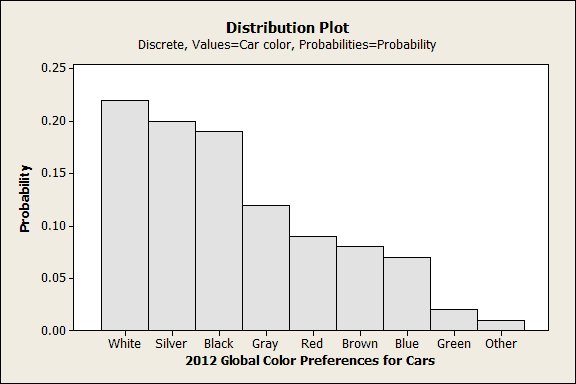Probability Distributions
Random Variables
Random variables are variables that can take different values, and the value they take depends on a probabilistic process.
Examples:
| Y=Resting heart rate | Y=congestive heart failure status (1=Yes, 0=No) |
|---|---|
| 80 | 0 |
| 82 | 1 |
| 78 | 0 |
| 90 | 1 |
| 65 | 0 |
Probability Distributions
A probability distribution is a function that maps a possible outcome of a random variable to its probability of occurrence.

Key Components of Probability Distributions
Support: values that the distribution can take
Parameters: values that characterize the distribution
PDF/PMF: \(f(x)\) , function whose output is a probability of a particular value or range of values
CDF: \(F(x)\) , function whose output is a cumulative probability up to a particular value
Expected value/mean: \(\mathbf{E}(X)\)
Variance: \(\mathbf{E}[(X-\mu)^2]\)
Example
| \(X\) | 1 | 2 | 3 | 4 |
| \(P(X=x)\) | 0.2 | 0.4 | 0.3 | 0.1 |
Is this a valid probability distribution?
Is this a discrete or continuous distribution?
What is the support?
What is \(P(X=3)\)?
What is \(F(3)\)?
What is \(\mathbf{E}(X)\)?
What is \(Var(X)\)?
Example answers
Is this a valid probability distribution? Yes - probabilities sum to 1
Is this a discrete or continuous distribution? Discrete
What is the support? {1,2,3,4}
What is \(P(X=3)\)? 0.3
What is \(F(3)\)? 0.2+0.4+0.3=0.9
Example answers
What is \(\mathbf{E}(X)\)?
- \(\sum_x xP(X=x) = 1*0.2+2*0.4+3*0.3+4*0.1 = 2.3\)
What is \(Var(X)\)?
\(Var(X)=\mathbf{E}[(X-\mu)^2]=\mathbf{E}[X^2]-\mathbf{E}[X]^2\) (do this on your own)
\(\mathbf{E}[X]^2\) \(= (2.3)^2 = 5.29\)
\(\mathbf{E}[X^2]\) \(=\sum_x x^2 P(X=x)\) \(=1^2*0.2\) \(+2^2*0.4\) \(+3^2*0.3\) \(+4^2*0.1 = 6.1\)
\(Var(X)=6.1-5.29=0.81\)
Common Probability Distributions
- Normal
- Bernoulli
- Binomial
- Uniform
- Multinomial
- Poisson
- Negative Binomial
- Exponential